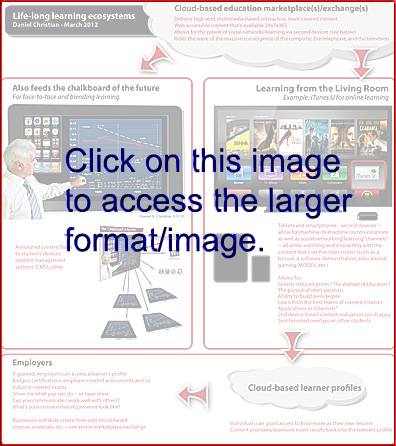My hats off to Clayton Christensen and Henry Eyring! My respect level just went up yet another notch for these two people.
Seeing as Clayton is a Professor at ***Harvard‘s*** Business School and Henry is an ***Administrator*** at Brigham Young University, their stance and recent letter to college and university trustees nationwide is a wonderful example of true leadership. They risked many things by taking a stand and urging institutions of higher education to change. Their purpose is noble. Their message should be heeded.
From the website of the American Council of Trustees and Alumni: (emphasis by DSC)
Clayton Christensen: higher ed trustees “crucial as never before”
Harvard Business School professor (and bestselling author of The Innovator’s Dilemma) Clayton M. Christensen and Henry J. Eyring of Brigham Young University recently sent a letter to college and university trustees nationwide, recognizing a critical turning point for the future of higher education. “If you’ve been serving for more than a few years, you’ve seen a big change in the nature of trustees meetings,” the authors wrote. “Before the downturn of 2008, the agenda tended to focus on growth and on ways to fund it…. At some point, the bubble was bound to burst—or at least start to sag. Now that it has, your role becomes crucial as never before.” The letter urges trustees to demand innovative solutions to expand student access and improve academic quality at their institutions: “The innovators can do more than merely avoid disruption. They can help usher in a new age of higher education, one of unprecedented access and quality, a combined industrial revolution and renaissance.”
.
Addendum on 7/16/12:
- It’s time to disrupt the system — from Getting Smart by Alison Anderson — includes fast-moving 5-min presentation/clip from Will Richardson
















